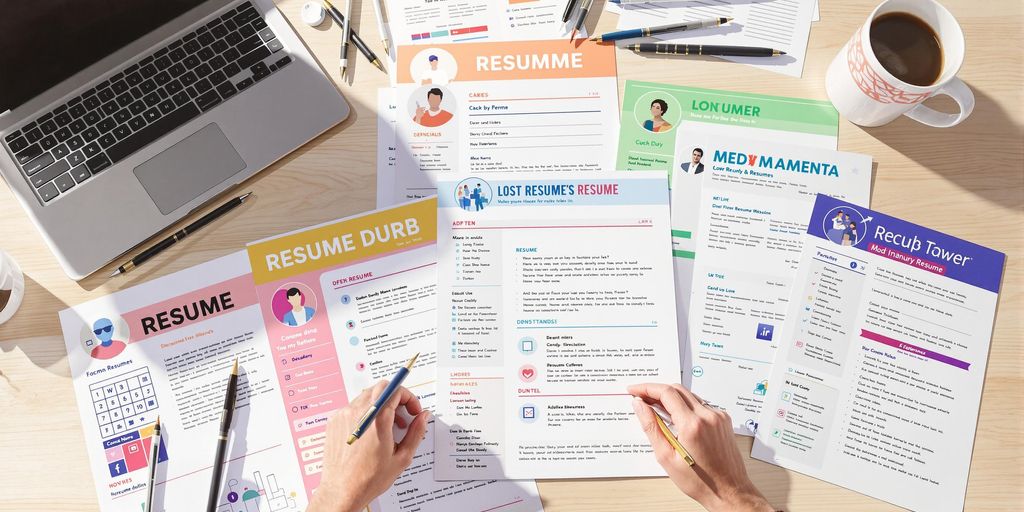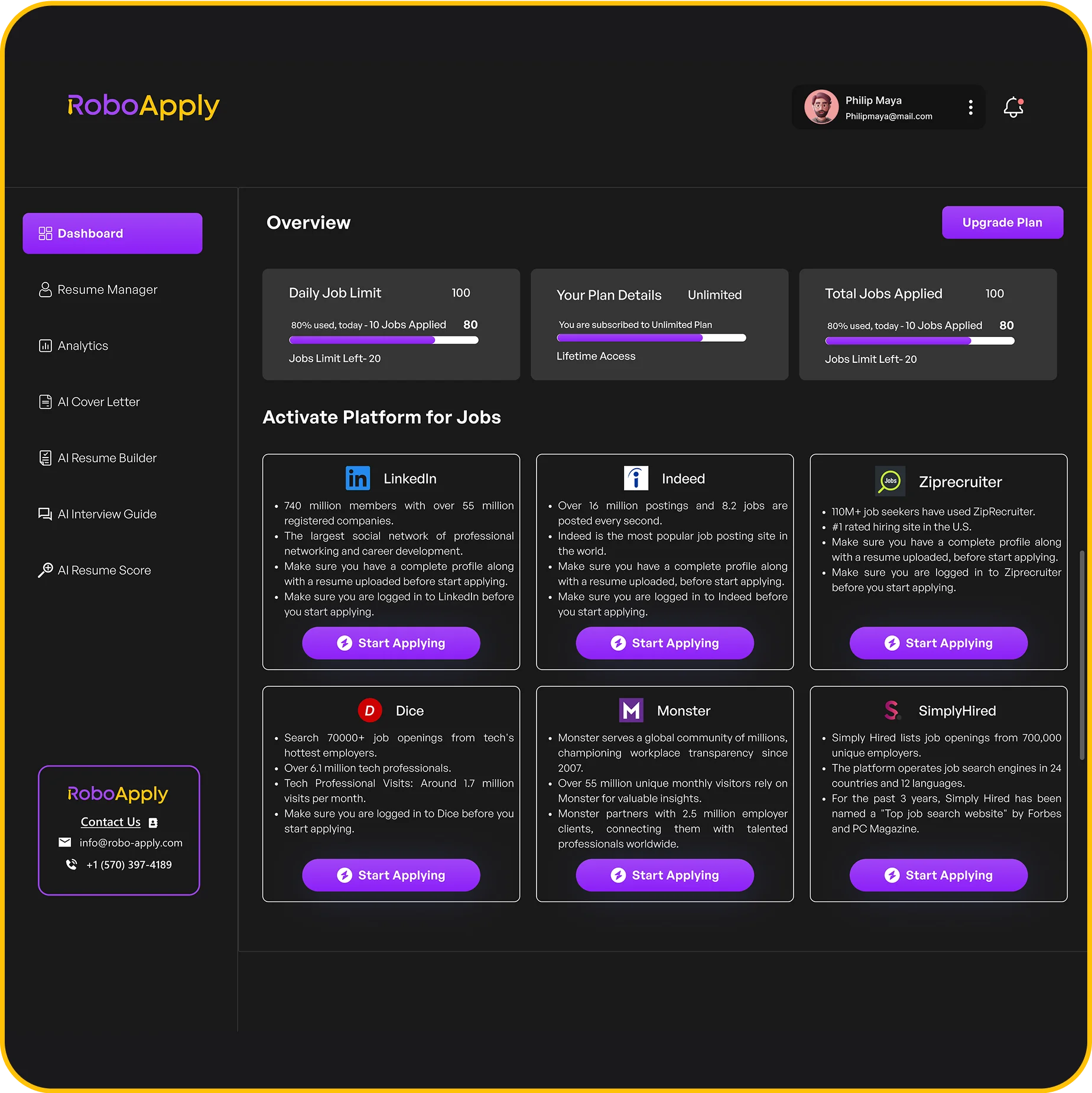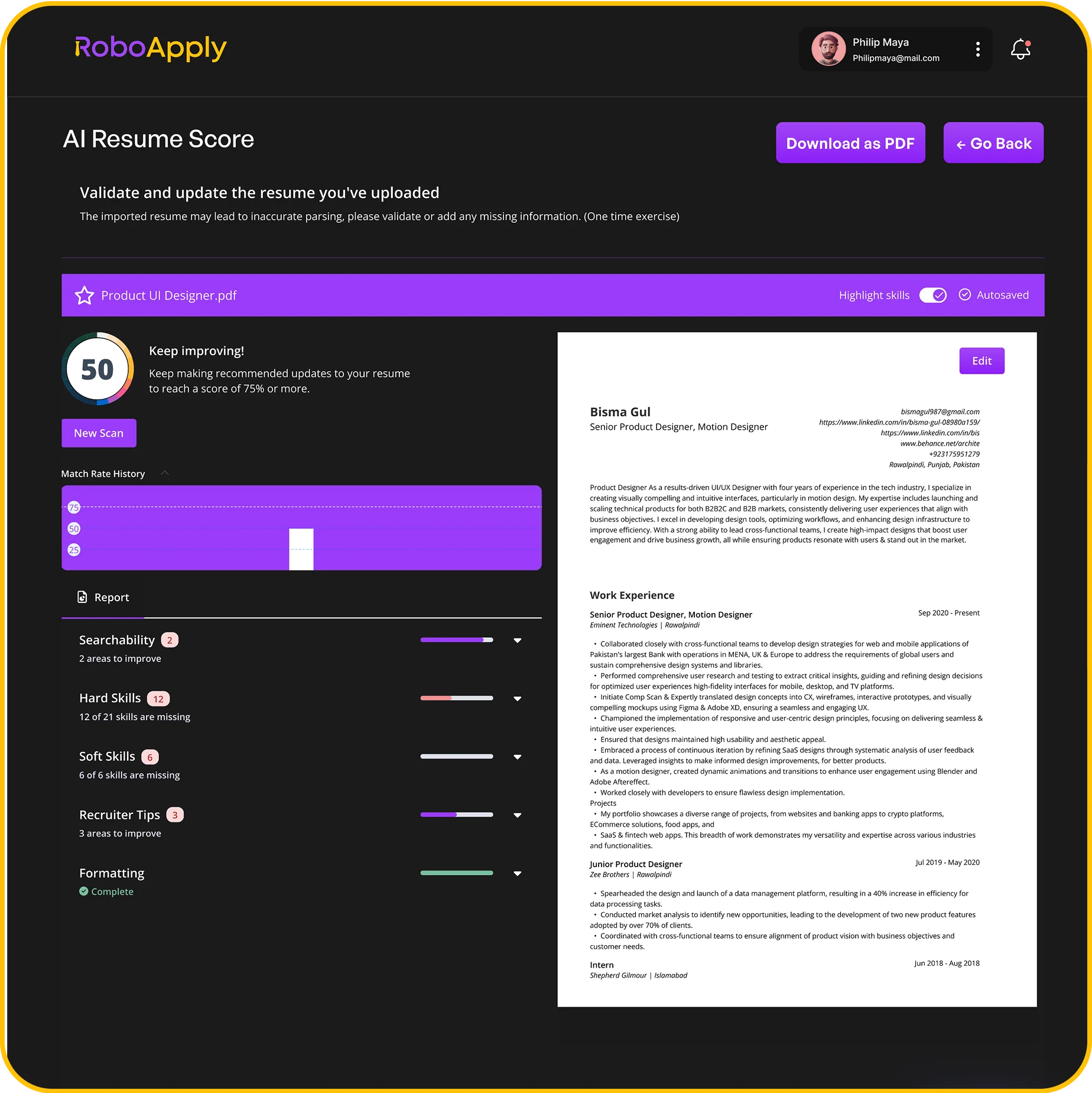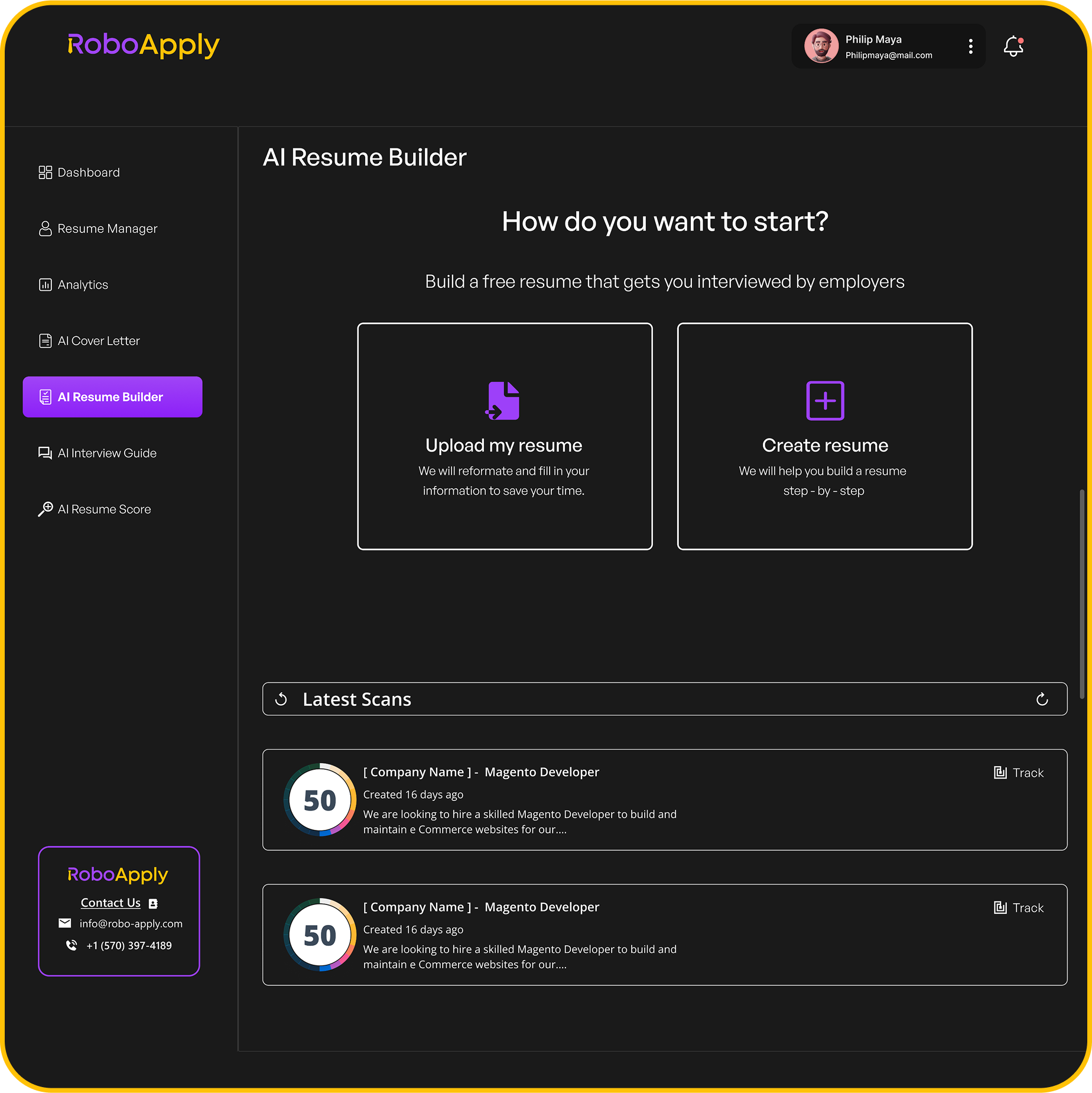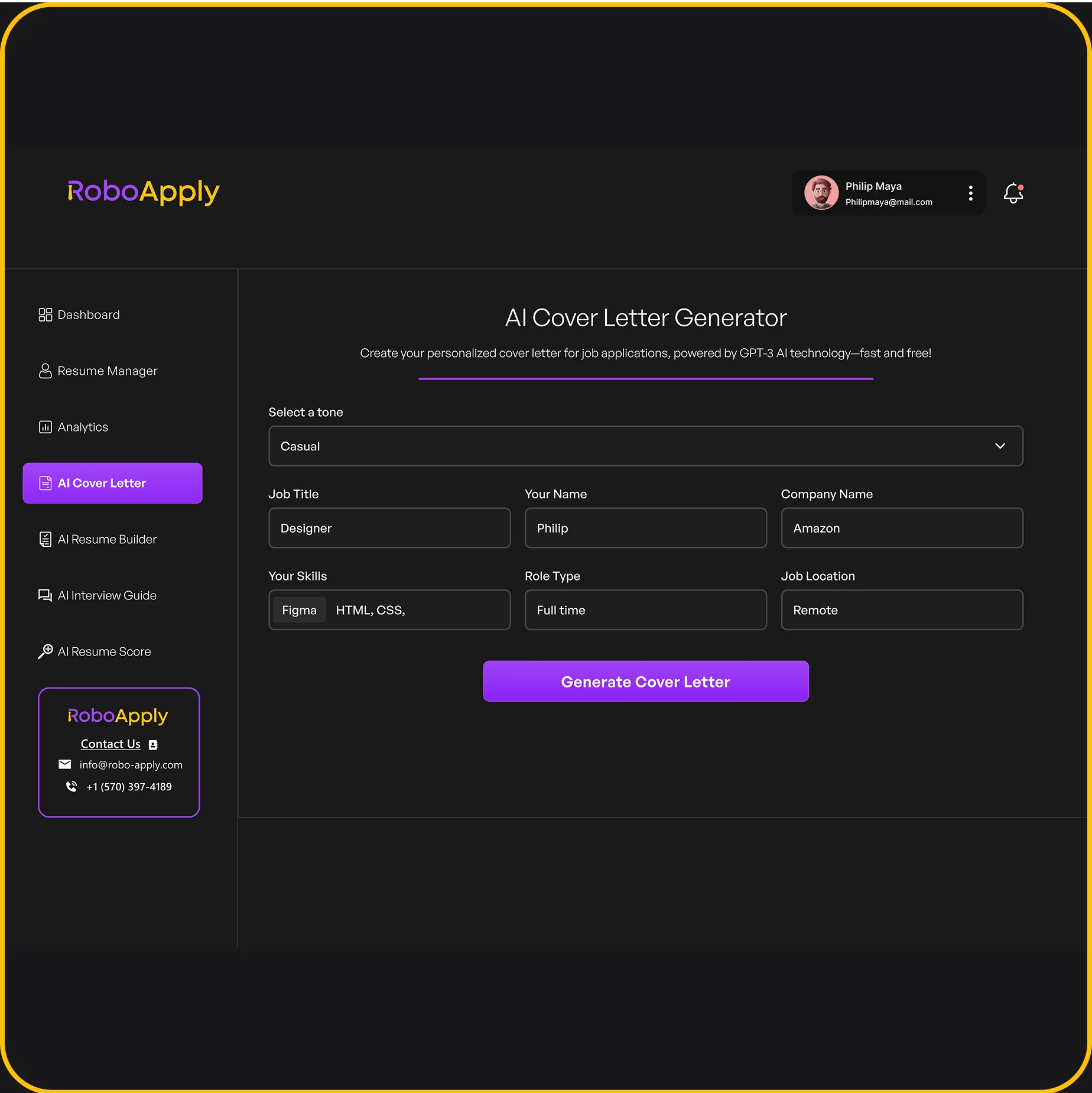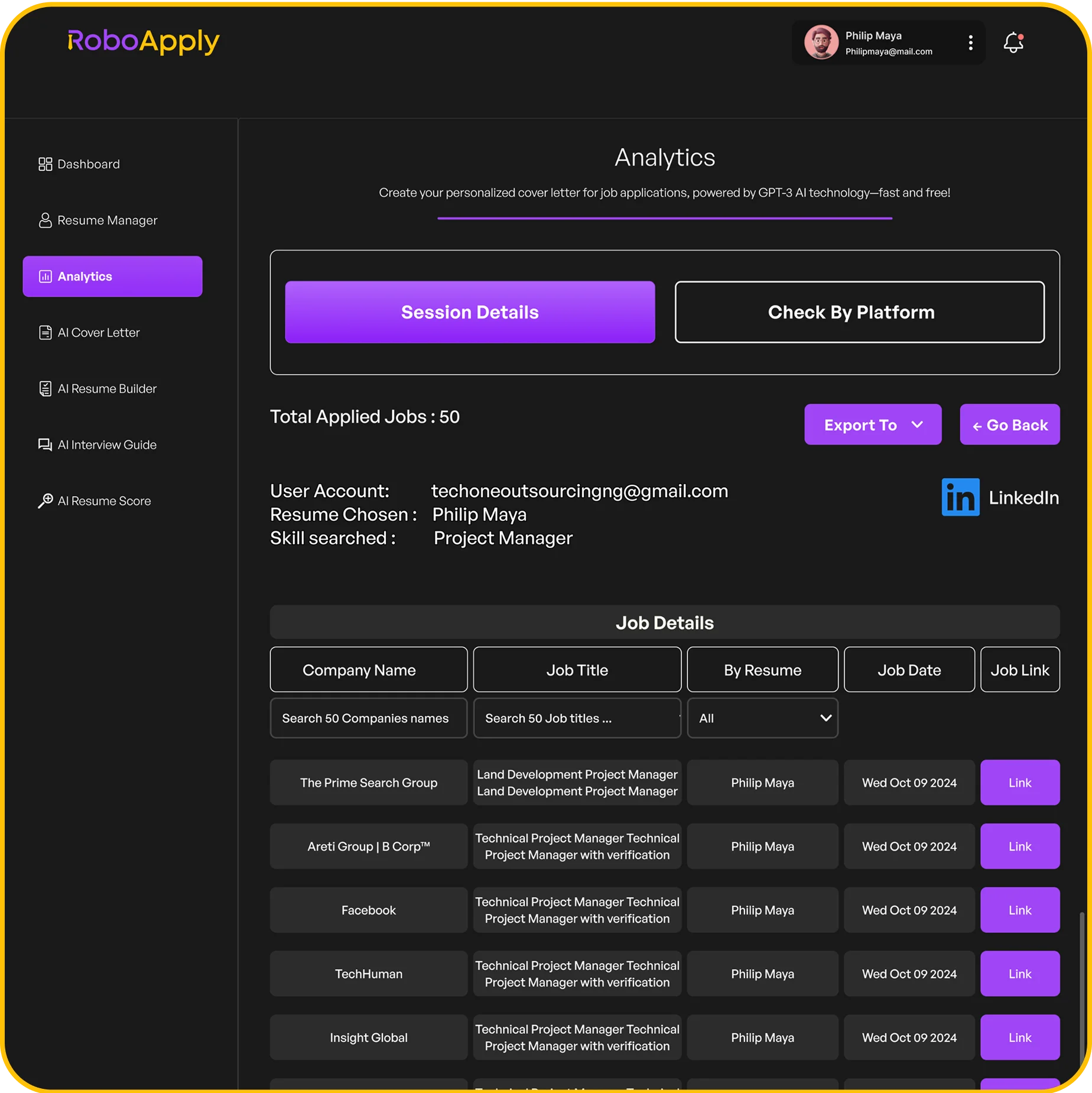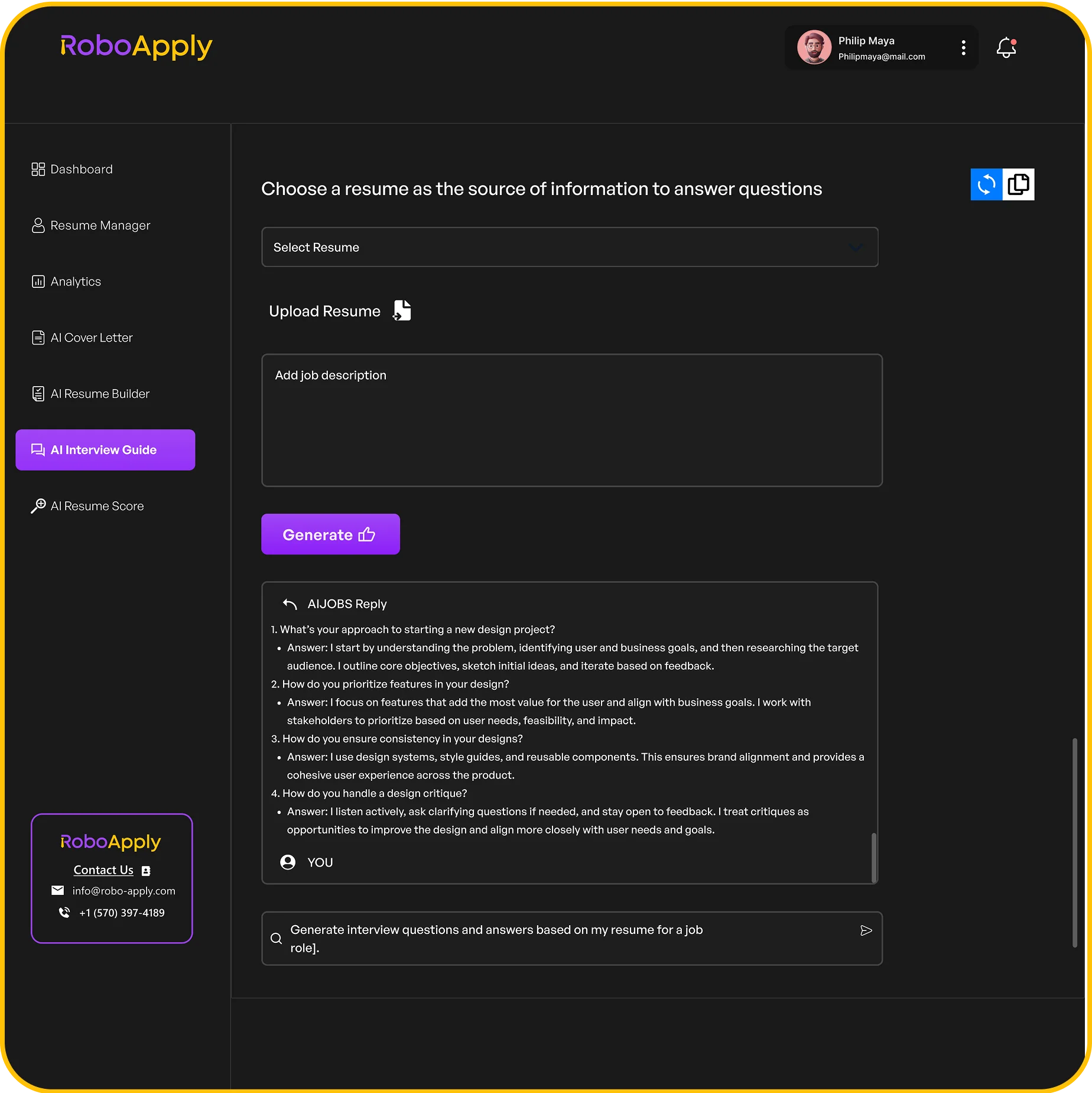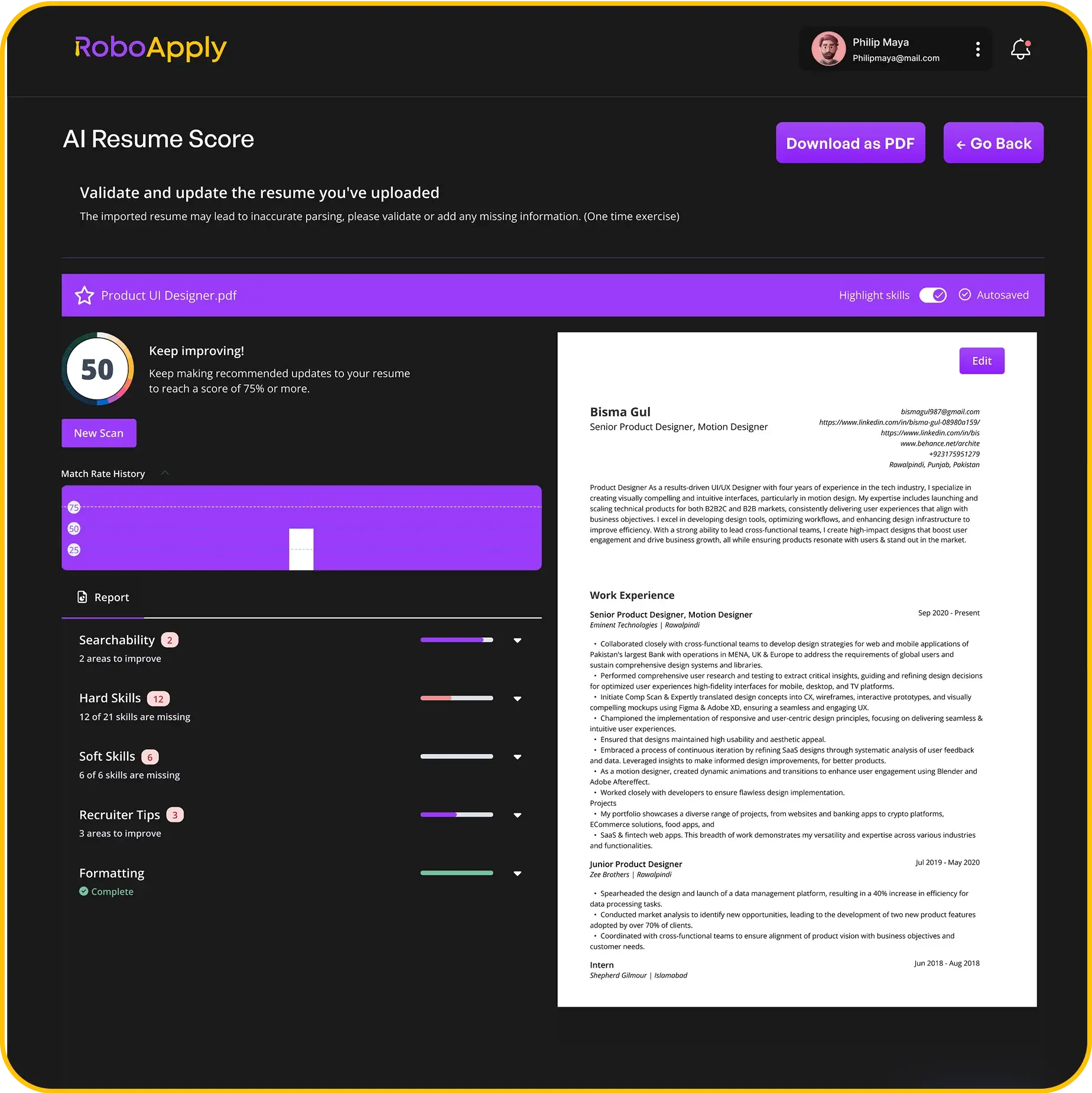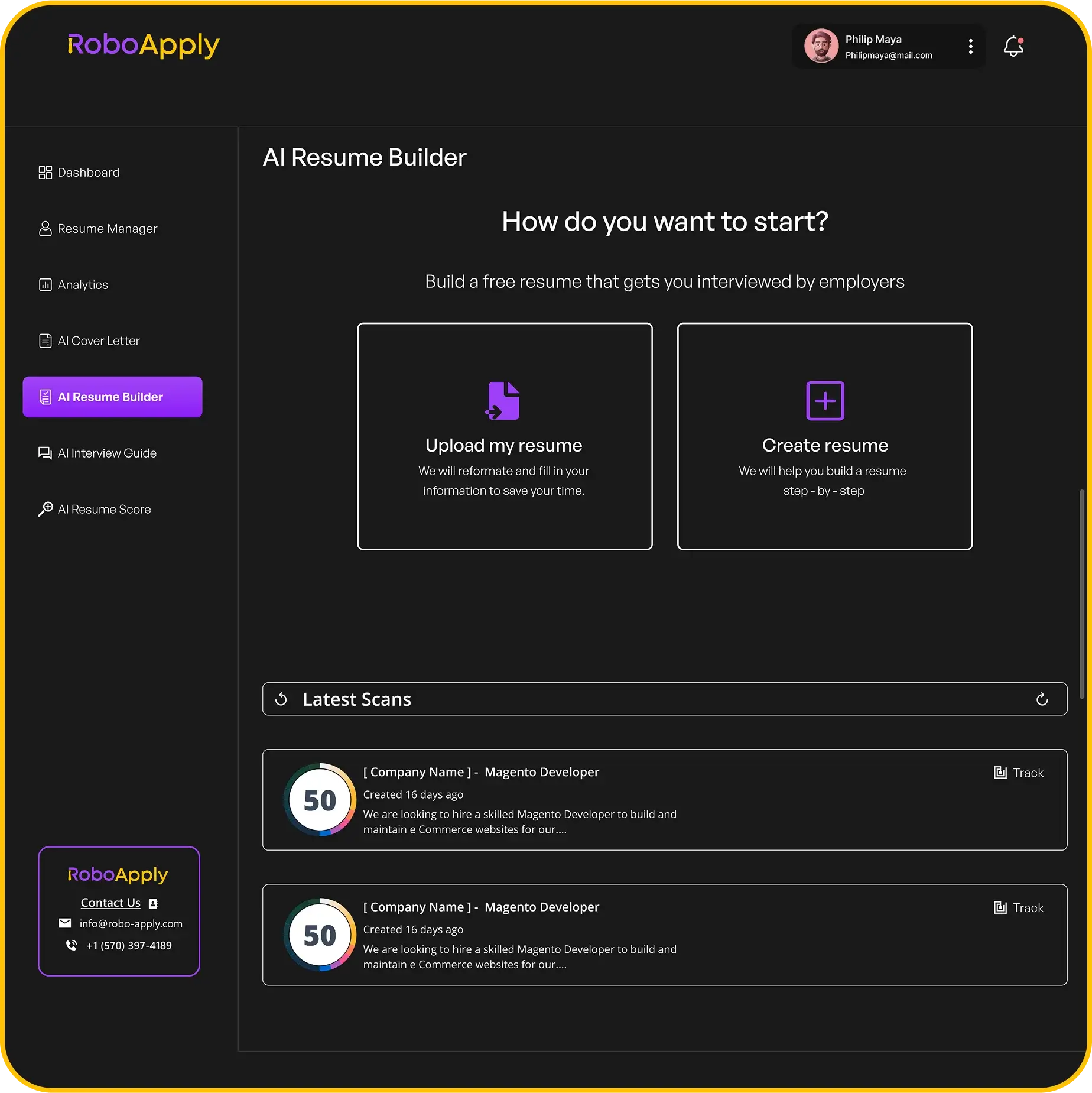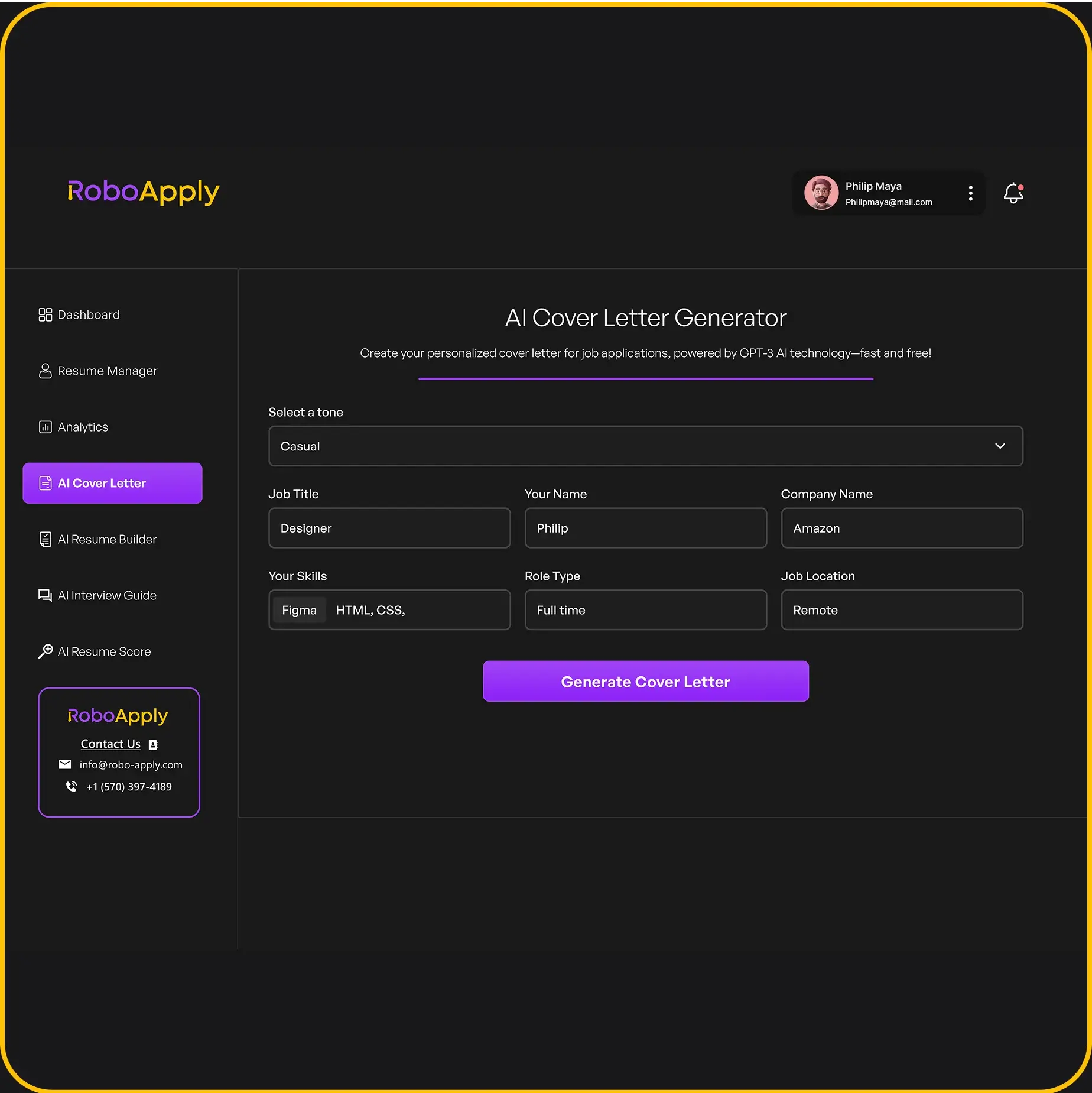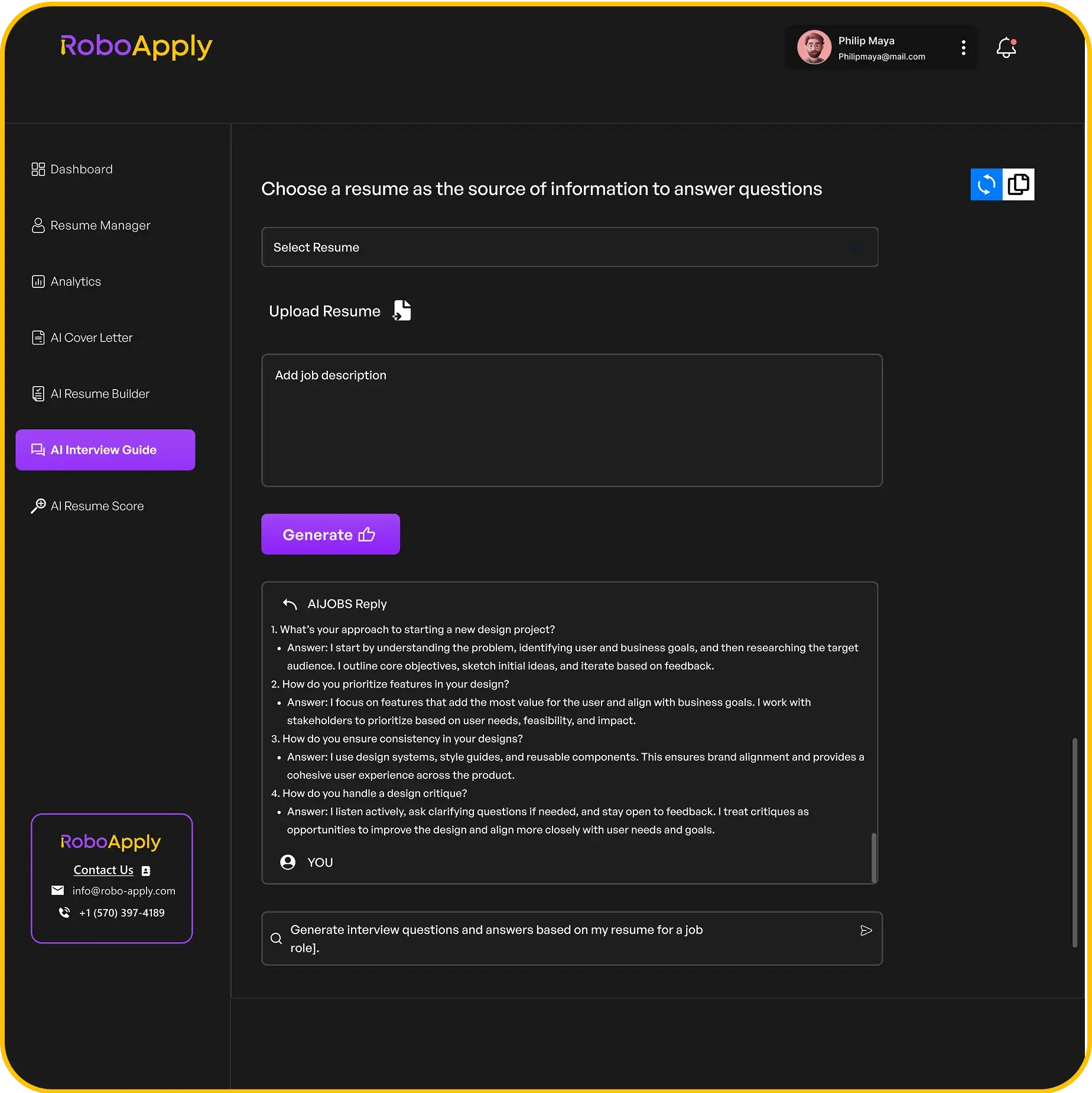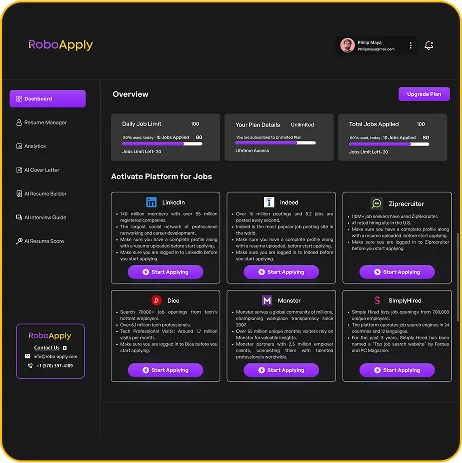Looking for a job in marketing? You know that standing out is a big deal. A regular resume just won’t cut it anymore. This article shows you 8 different ways to make your resume pop. These ideas go beyond just listing your work history. They help you show off your skills in a creative way, especially for marketing roles. Get ready to make a resume that gets noticed, powered by RoboApply.
Key Takeaways
- Creative Marketing Resume | Powered by RoboApply: Think outside the box for your job application.
- Visual resumes can grab attention more than plain text ones.
- Show, don’t just tell, your marketing abilities.
- Personalized approaches often work best for marketing roles.
- Using different formats can highlight various skills.
1. Infographic
Okay, so an infographic resume? It’s basically taking all your work history and skills and turning it into a visual representation. Think charts, icons, timelines – anything to make the info pop. It’s not your typical resume, but in the right industry, it can really make you stand out. RoboApply can help you tailor your resume to fit the specific job requirements, ensuring your infographic resume stands out to potential employers.
Think of it as a way to show, not just tell, what you’re capable of. It’s especially useful if you’re in a creative field where visual communication is key. But be warned: it’s not for every job or every industry. You need to know your audience.
Here’s what you need to keep in mind:
- Keep it simple: Don’t overload the design with too much information. Focus on the most important stuff.
- Use visuals wisely: Make sure the charts and icons actually add something to the information, not just decoration.
- Target your audience: Know what kind of design and information will appeal to the people who are hiring.
An infographic resume is a great way to showcase your skills and experience in a visually appealing format. However, it’s important to ensure that the design is professional and easy to read, and that the information is accurate and relevant to the job you’re applying for. It’s not just about making it look pretty; it’s about making it effective.
I saw this one infographic resume example online that was really well done. It used a timeline to show the person’s career progression, and each job was represented by a different icon. It was super easy to understand and made the person’s experience really memorable. It’s a good reminder that a well-designed infographic can really make a difference. You can also use RoboApply to ensure your resume is tailored to the specific job requirements, increasing your chances of getting noticed.
I think the best use case is when you want to highlight specific achievements with numbers. For example:
| Achievement | Result |
|---|---|
| Increased social media reach | 30% growth in followers |
| Improved email open rates | 15% increase in click-through rates |
| Launched successful campaign | Generated $50,000 in revenue |
Using an infographic to display this kind of data can be way more impactful than just listing it in a bullet point. Just make sure the data is accurate and easy to understand. And remember, RoboApply can help you optimize your resume for applicant tracking systems, ensuring your qualifications are seen by recruiters.
2. Video
Video resumes? Yeah, they’re a thing. And honestly, they can be pretty cool if done right. Think about it: instead of just reading about you, potential employers get to see you, hear you, and get a sense of your personality. It’s like a mini-interview before the actual interview. But, and this is a big but, they can also be a disaster if they’re poorly executed. So, let’s talk about how to make a video resume that actually helps you land the job. RoboApply can help you tailor your resume to the job description, ensuring your video highlights the most relevant skills.
A well-crafted video resume can set you apart from other candidates.
First off, think about what kind of impression you want to make. Are you going for professional and polished, or more casual and approachable? Your video should reflect the kind of role you’re applying for. Also, keep it short! No one wants to watch a 10-minute video resume. Aim for 1-2 minutes max.
Remember to practice your script beforehand. It’s okay to have notes, but don’t just read off a piece of paper. You want to come across as natural and confident.
Here are a few things to keep in mind:
- Lighting: Make sure you’re well-lit. Natural light is best, but if you’re filming indoors, use lamps to avoid shadows.
- Sound: Invest in a decent microphone. Nothing is worse than a video with bad audio.
- Background: Choose a clean and uncluttered background. You don’t want anything distracting in the frame.
- Content: Focus on your key skills and experiences. Highlight what makes you a great fit for the job. Check out this video resume guide for more tips.
And finally, don’t forget to proofread! Watch your video several times to catch any mistakes. You might even want to ask a friend or family member to give you feedback. A stable camera is important, so consider using a tripod or gimbal for your video.
3. Portfolio

A portfolio resume is a great way to show, not just tell, what you can do. It’s especially useful in marketing where visual communication and demonstrable results are key. Instead of just listing your skills, you show them through examples of your work. Think of it as a curated collection of your best marketing projects.
A portfolio resume is a dynamic way to showcase your marketing skills and achievements through tangible examples of your work.
Here’s the thing: a portfolio resume isn’t just a document; it’s a presentation. It’s about making a memorable impression and proving your capabilities with real-world examples. It’s a bit more work upfront, but the payoff can be huge, especially when you’re trying to land a competitive marketing role. You can use cover letter templates for Word to create a professional letter to go along with your portfolio.
A portfolio resume is a powerful tool for marketers because it allows you to demonstrate your skills and accomplishments in a way that a traditional resume simply can’t. It’s about bringing your experience to life and making a lasting impression on potential employers.
Here are some things to keep in mind when creating a portfolio resume:
- Choose your best work: Only include projects that you’re proud of and that demonstrate your skills.
- Tell a story: For each project, explain the challenge, your approach, and the results you achieved.
- Make it visually appealing: Use high-quality images and a clean, professional design.
- Tailor it to the job: Customize your portfolio to highlight the skills and experience that are most relevant to the specific role you’re applying for.
- Keep it updated: Regularly add new projects and remove outdated ones.
For example, if you’re applying for a social media marketing role, include examples of successful social media campaigns you’ve run. If you’re applying for a content marketing role, include examples of blog posts, articles, or ebooks you’ve written. If you’re applying for a medical office administrator role, showcase your organizational skills and attention to detail with examples of projects you’ve managed medical office administrator resume.
Think about including:
- Website designs you’ve created.
- Social media campaigns you’ve managed.
- Marketing reports you’ve generated.
And remember, RoboApply can help you tailor your resume and portfolio to specific job descriptions, making sure you highlight the skills and experience that employers are looking for. If you are applying for a police officer position, make sure to highlight your skills and experience clearly to stand out in the job market with a strong police officer resume.
4. Personal Website

Having your own website is like having a digital storefront for your skills. It’s a place where you can show off your work, talk about your experience, and let potential employers get to know you a bit better. It’s more than just a resume; it’s a dynamic representation of you. RoboApply can help you tailor your resume content to match the specific roles you’re targeting, ensuring your website highlights the most relevant skills and experiences.
A personal website allows you to control your narrative and showcase your personality in a way that a traditional resume simply can’t. It’s a great way to stand out from the crowd, especially in a competitive field like marketing. Think of it as your own little corner of the internet where you can shine. You can even include a blog to demonstrate your industry knowledge and thought leadership.
A personal website is a great way to show off your skills and experience. It’s a place where you can control your narrative and showcase your personality in a way that a traditional resume simply can’t. It’s a great way to stand out from the crowd, especially in a competitive field like marketing.
Here are a few things you can include on your marketing resume website:
- Portfolio: Show off your best work. Include case studies, blog posts, social media campaigns, or anything else that demonstrates your skills.
- About Me: Tell your story. Share your background, your passions, and your career goals. Let your personality shine through.
- Contact Information: Make it easy for people to get in touch with you. Include your email address, phone number, and social media links.
- Resume: Include a downloadable version of your resume. This makes it easy for recruiters to quickly access your qualifications. You can find great marketing and PR resume examples to inspire your own.
Creating a personal website doesn’t have to be complicated. There are many user-friendly website builders available, such as Wix, Squarespace, and WordPress. Choose one that fits your needs and budget, and start building your online presence today. Remember to keep it updated with your latest projects and accomplishments. A well-maintained website shows that you’re proactive and engaged in your career. It’s also a great place to showcase your digital marketing resume examples and tailor them to specific job applications. Don’t forget to include a clear call to action, such as "Download my resume" or "Contact me for opportunities."
5. Social Media

Social media isn’t just for sharing vacation pics; it’s a powerful tool to showcase your marketing skills. Think of your profiles as a living, breathing resume. It’s about showing, not just telling.
Your social media presence can be a dynamic resume. Make sure your profiles are public (or at least accessible to recruiters) and showcase your work. Here’s how to make the most of it:
- Curate Your Content: Share articles you find interesting, comment on industry trends, and post your own original content. This shows you’re engaged and knowledgeable. RoboApply can help you find relevant content to share, saving you time.
- Highlight Projects: Did you run a successful campaign? Post about it! Include metrics, visuals, and a brief explanation of your role. Use platforms like LinkedIn, X, or even Instagram to visually present your achievements. For example, you can show how you used data-driven strategies to improve engagement.
- Engage with the Community: Don’t just broadcast; participate. Comment on other people’s posts, join relevant groups, and start conversations. This demonstrates your communication skills and ability to build relationships. It’s a great way to show your passion for marketing.
Remember to keep your profiles professional. Avoid controversial topics and ensure your posts reflect positively on your personal brand. A poorly managed social media presence can be a red flag for potential employers.
Think about using your social media to show off your skills in a way that a traditional resume can’t. It’s a chance to be creative and show your personality. You can even use it to craft memorable cover letters that stand out.
For example, if you’re applying for a social media manager position, your own social media should be top-notch. It’s like a walking, talking example of your work. Make sure your profiles are optimized for the social media manager position you want.
6. Case Study

Using a case study as your resume? It’s like showing, not just telling. Instead of listing your skills, you prove them with a real-world example. It’s a bold move, but it can seriously pay off, especially in marketing where results matter.
Think of it as a detailed story of a project you led or significantly contributed to. You’ll walk the reader through the challenge, your actions, and the awesome results. It’s more engaging than just bullet points, and it lets you highlight your problem-solving skills.
Here’s the thing: it needs to be well-structured and easy to follow. No one wants to wade through a wall of text. Make it visually appealing and focus on the impact you made. RoboApply can help you structure your case study to highlight the most important information for potential employers.
A case study resume isn’t for every job, but when it fits, it really fits. It’s perfect for roles where you need to demonstrate strategic thinking and a track record of success. Just make sure it’s tailored to the specific job you’re applying for.
Here’s what you might include:
- The Challenge: What problem were you trying to solve?
- Your Strategy: How did you approach the problem?
- The Actions: What specific steps did you take?
- The Results: What was the outcome, and how did you measure success?
- Your Learnings: What did you learn from the experience?
It’s a bit more work than a traditional resume, but the payoff can be huge. You’re not just saying you’re good; you’re proving it. Plus, it shows you’re willing to go the extra mile, which is always a good look. Remember to use marketing case study templates to help you get started.
7. Interactive
An interactive resume? Sounds fancy, right? It’s all about making your resume more than just a static document. Think quizzes, clickable elements, and even mini-games that showcase your skills. It’s a bold move, but if done right, it can really make you stand out.
Interactive resumes are especially good for roles where creativity and tech-savviness are valued. It shows you’re not afraid to try new things and that you can think outside the box. Plus, it’s a great way to demonstrate your skills in a more engaging way than just listing them.
Interactive resumes can be a double-edged sword. While they can impress, they also require more effort to create and might not be compatible with all application systems. Make sure to research the company and role before deciding to go this route.
Here are a few ideas to get you started:
- Quizzes: Create a quiz related to your field and let recruiters test their knowledge. This shows your expertise and makes them remember you.
- Clickable Portfolio: Instead of just listing projects, make them clickable. Each click can lead to a case study, a demo, or even a video presentation.
- Interactive Timeline: Turn your work history into an interactive timeline. Let recruiters explore your career path in a visually appealing way.
Remember, the goal is to showcase your skills and personality in a memorable way. Don’t just add interactive elements for the sake of it. Make sure they add value and highlight your strengths. You can use resume samples to get inspired.
Here’s a simple table to help you decide if an interactive resume is right for you:
| Feature | Interactive Resume | Traditional Resume |
|---|---|---|
| Engagement | High | Low |
| Creativity | High | Low |
| Compatibility | Varies | High |
| Effort to Create | High | Low |
Don’t forget to tailor your interactive resume to each job application. Use job-specific templates to make sure you are targeting the right skills. RoboApply can help you customize your resume for each application, ensuring it aligns with the job description. Also, consider using free templates and expert advice to make sure your resume is effective.
8. Storytelling
Storytelling in a resume? Yep, it’s a thing. Instead of just listing your accomplishments, you weave them into a narrative that shows who you are and what you’re capable of. It’s about making your resume memorable and engaging. Think of it as turning your career history into a compelling story that captures the reader’s attention. RoboApply can help you structure your resume to highlight these stories effectively.
Storytelling isn’t just about making things up. It’s about presenting your real experiences in a way that resonates with the reader and shows your personality and skills in action.
Here’s how you can make it work:
- Start with a strong opening. Just like any good story, your resume needs a hook. This could be a compelling headline or a summary that grabs the reader’s attention.
- Use action verbs to describe your accomplishments. Instead of saying "Responsible for managing social media," say "Spearheaded social media campaigns that increased engagement by 30%."
- Quantify your results whenever possible. Numbers add credibility to your story. For example, "Increased sales by 15% in Q2 2024 through targeted marketing initiatives."
Think about the challenges you faced and how you overcame them. This shows your problem-solving skills and resilience. You can also use your resume to highlight traditional educational experiences to provide a comprehensive overview of your qualifications.
Here’s a simple example:
Instead of:
- Managed customer accounts.
- Resolved customer complaints.
Try this:
- Transformed strained customer relationships into loyal partnerships by proactively addressing concerns and implementing personalized solutions, resulting in a 20% increase in customer retention.
See the difference? It’s not just about what you did, but how you did it and what impact it had. You can also use RoboApply to help you tailor your resume to specific job descriptions, ensuring that your story aligns with what employers are looking for. Remember to also include a rental cover letter to help you stand out.
Want to make your job applications stand out? Learning how to tell your story well is super important. It helps you connect with hiring managers and show them why you’re the best fit. Check out our website to learn more about how to make your applications shine!
Wrapping Things Up: Your Marketing Resume Journey
So, there you have it. Making a good marketing resume isn’t just about listing your jobs. It’s about showing what you can do, what you’ve done, and how you think. Think of it like your first big marketing project for a new company—you want to grab attention and make a good impression. Use these ideas as a starting point, but don’t be afraid to make your resume truly yours. The goal is to stand out and get that interview. Good luck!
Frequently Asked Questions
What is a creative marketing resume?
A creative marketing resume is a special kind of resume that shows off your skills in a fun and different way. Instead of just a plain list, it might use pictures, videos, or even a website to tell your story and show what you can do.
Why should I make a creative marketing resume?
It helps you stand out! In marketing, being creative is super important. A creative resume proves you’re good at thinking outside the box, which is exactly what companies want to see. It makes you memorable to hiring managers.
What are some ways to make a creative resume?
You can use many things! Some people make an infographic (like a picture with information), a short video about themselves, a portfolio (a collection of your best work), or even a personal website. You could also use social media in a smart way.
Is a creative resume good for every job?
Not always. For some jobs, especially in very traditional companies, a standard resume might be better. But for marketing roles, especially those that need new ideas, a creative resume can really help you get noticed.
How do I start making a creative resume?
Start by thinking about what makes you special. What are your best projects? How can you show them off? Then, pick a format that fits your skills and the kind of job you want. Don’t be afraid to try new things!
What are some important tips for a good creative resume?
Keep it clear and easy to understand. Even if it’s creative, it still needs to show your skills and experience. Make sure it loads fast and looks good on different devices. And always check for mistakes!
Do I need special computer skills to make one?
Yes, you can! Many online tools help you make infographics, simple websites, or even edit short videos without needing to be a tech expert. Look for user-friendly platforms that guide you through the process.
How do I share my creative resume with companies?
You can include a link to your creative resume on your regular resume or in your cover letter. If it’s a physical item, like a printed infographic, you’d bring it to an interview or mail it if asked. Always make it easy for them to find!
